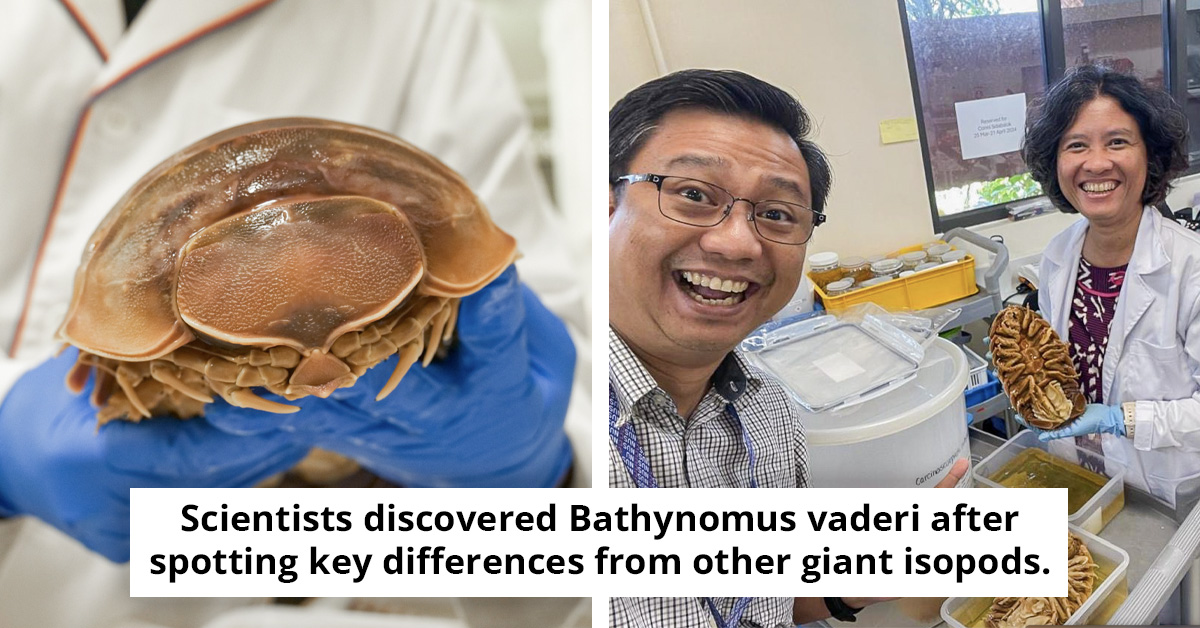New Deep-Sea Discovery Reveals Sea Spiders Fueled by Methane
Some ocean discoveries feel like something out of science fiction, and this is one of them. Scientists have come across creatures they’re calling “methane-powered sea spiders,” a nickname that sounds dramatic but isn’t far off from what they are. These strange animals live in a way that hasn’t been seen before, deep on the ocean floor, in places where most life can’t survive.
The discovery involves three previously unknown species of sea spiders, part of the Sericosura genus. They were found living in a harsh and unusual environment: methane seeps.
These are spots on the seafloor where methane gas escapes from deep underground into the water. It’s a smelly, toxic setting by human standards, but for certain life forms, it’s the perfect place to thrive.
Researchers didn’t stumble across them by accident. The sea spiders were spotted during remote-controlled dives carried out in 2021 and 2023.
These dives took place off the coasts of Southern California and Alaska, where methane seeps are known to exist. The spiders weren’t just hanging around by coincidence; they seem to depend on the methane seeps to survive, and it turns out they may not be able to live anywhere else.
What’s unusual isn’t just that they’re found near methane. It’s how they survive there that has scientists excited. Most animals living near methane seeps rely on other organisms, usually bacteria, that can convert methane or methanol into something usable, like carbon and energy. But the sea spiders appear to take that relationship one step further.
Instead of just living near the bacteria or picking them up from the environment, the spiders seem to grow the bacteria on their bodies. And then they eat it. Yes, the current theory is that these spiders cultivate bacteria on their surface and directly consume them, using them as a food source.
It’s like growing your groceries and then snacking on them when you’re hungry. According to a paper published in the journal PNAS, researchers found that almost all the methane-oxidizing bacteria (known as MMOx) living on the spiders used carbon that came from methane or methanol, not from the usual CO₂, like most organisms. That alone is a big deal.
Ecological Implications
Dr. Sylvia Earle, a renowned marine biologist and founder of Mission Blue, emphasizes that discoveries like methane-powered sea spiders highlight the resilience of life in extreme environments. These organisms challenge our understanding of ecological niches and energy sources in the deep sea.
According to Earle, such findings could lead scientists to rethink ecological relationships and energy cycles in marine ecosystems. By studying these unique adaptations, we can develop conservation strategies that protect not just the species but their habitats as well, fostering biodiversity in a changing climate.
Scientists have discovered "methane-powered sea spiders" off the US coast.
But the story doesn’t stop there. The scientists also introduced a carbon isotope tracer into the environment, which allowed them to track how quickly the spiders were incorporating this methane-based carbon into their tissues.
The results showed that, within just five days, the spiders’ digestive systems were full of it. The only way that could’ve happened, the team says, is if the spiders had eaten the bacteria.
"Nearly all sea spider-associated MMOx bacterial cells assimilated carbon from either methane or methanol but not CO₂," the researchers explained.
“Within five days, sea spider digestive tissues also showed significant incorporation of the [carbon isotope] label, a phenomenon that could only have occurred via consumption of methane-oxidizing bacteria.”

Even more interesting is the possibility that the bacteria aren’t just something the spiders pick up by chance. There’s evidence to suggest it might be passed down through generations, meaning sea spider offspring might be born with it already in place, ready to grow and feed off of.
This kind of symbiotic relationship isn’t entirely unheard of in extreme environments, but seeing it work this way, in an animal cultivating bacteria directly on its body as a food source, is rare. It offers a glimpse into just how flexible and strange life can be, especially in places where most creatures wouldn’t last a minute.
So while the nickname “methane-powered sea spiders” might sound like a comic book idea, it’s rooted in some pretty wild reality.
These creatures have adapted to one of the harshest ecosystems on Earth and turned it into a sustainable, possibly inherited food system. And scientists are only just beginning to understand how it all works.
Dr. Craig Smith, a deep-sea ecologist at the University of Hawaii, explains that the presence of methane-powered sea spiders indicates a complex relationship with the ocean’s geology. These organisms utilize methane as an energy source, showcasing a fascinating survival strategy in nutrient-poor environments.
He suggests that researchers should prioritize understanding these relationships through advanced exploration technologies. This could involve using remotely operated vehicles (ROVs) to gather more data on these ecosystems, thereby improving our insights on deep-sea biodiversity and its implications for global marine health.
Analysis & Recommendations
The discovery of methane-powered sea spiders not only expands our knowledge of marine biology but also emphasizes the importance of preserving these unique ecosystems. As Dr. Earle notes, understanding these organisms can provide insights into the resilience of life and the intricate balance of ocean ecosystems.
Future research should focus on applying innovative technologies to explore these extreme habitats further. By fostering interdisciplinary collaborations, we can develop more effective conservation strategies to protect these extraordinary life forms and their environments.




